“Through Enemy Jaws” by Ralph Oppenheim
THROUGH the dark night sky, streaking swiftly with their Hisso engines thundering, is the greatest trio of aces on the Western Front—the famous and inseparable “Three Mosquitoes,” the mightiest flying combination that had ever blazed its way through overwhelming odds and laughed to tell of it! Flying in a V formation—at point was Captain Kirby, impetuous young leader of the great trio; on his right was little Lieutenant “Shorty” Carn, the mild-eyed, corpulent little Mosquito and lanky Lieutenant Travis, eldest and wisest of the Mosquitoes on his left!
We’re back with 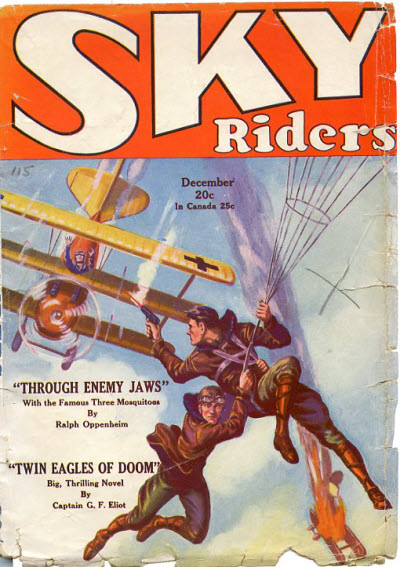 the third and final of three Ralph Oppenheim’s Three Mosquitoes stories we’re featuring this March for Mosquito Month! And this one’s a doozy! Allied intelligence had learned that the Germans had built a great seaplane, destined to turn the whole tide of the naval war. This seaplane was not only a compact fighting and raiding ship, but it could make remarkable speed and cover remarkable distance. It was even rumored that the Germans proposed to send a whole fleet of these new planes across the Atlantic, with the object of raiding the American coast!
the third and final of three Ralph Oppenheim’s Three Mosquitoes stories we’re featuring this March for Mosquito Month! And this one’s a doozy! Allied intelligence had learned that the Germans had built a great seaplane, destined to turn the whole tide of the naval war. This seaplane was not only a compact fighting and raiding ship, but it could make remarkable speed and cover remarkable distance. It was even rumored that the Germans proposed to send a whole fleet of these new planes across the Atlantic, with the object of raiding the American coast!
Many had been sent and tried to destroy the Reutz Aircraft Factory where said seaplane was being built and developed but were unsuccessful. Our intrepid Trio has been sent in a huge bomber alone, in an effort to get through and take out the plant. But when they are shot down 45 miles behind enemy lines—it’s Travis who comes up with a plan that will take them into the heart of the beast, through enemy jaws, to complete their mission and take out the plant! Read all about it in Ralph Oppenheim’s “Through Enemy Jaws” from the December 1929 issue of Sky Riders!
Into that maelstrom of screaming lead and crashing shells went the Three Mosquitoes, the dare-devils whom nothing could stop. Into that nest of spies and intrigue they dove, on the most treacherous mission they had ever had. Would the demonic, mysterious enemy seaplane gain through? The lives of millions hung breathlessly in the balance!
- Download “Through Enemy Jaws” (December 1929, Sky Riders)





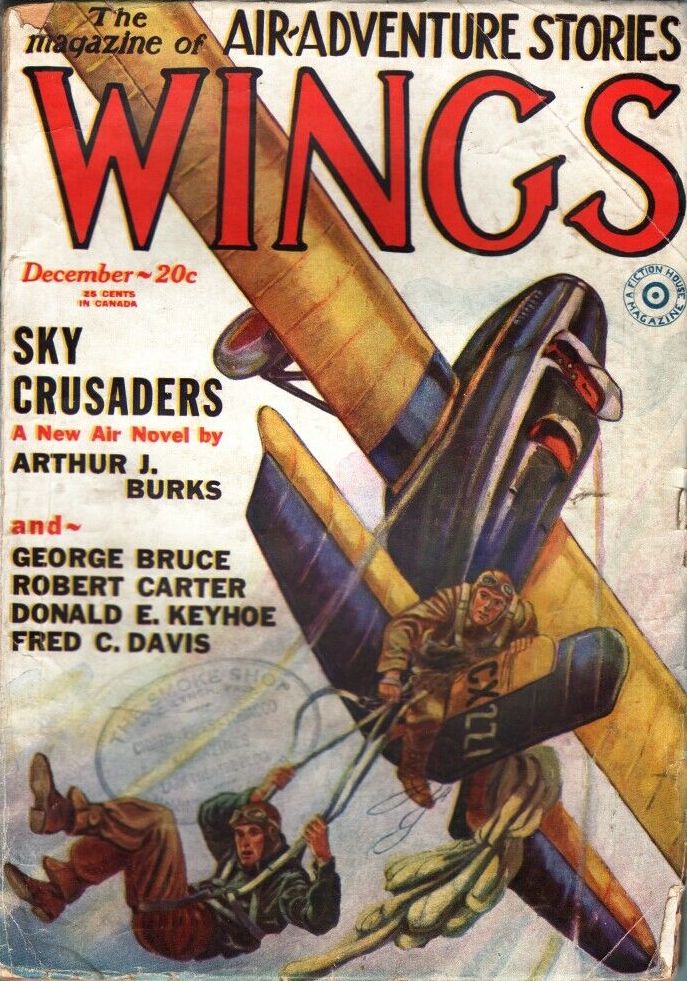 exciting air adventure from the pen of Robert Carter. Carter was a decorated WWI aviator who flew Bristol Fighters along the Italian front and poured this experience into the pulp stories he wrote from 1927 to 1929 for magazines like Aces, Air Trails, Air Stories, Battle Stories, War Birds and Wings.
exciting air adventure from the pen of Robert Carter. Carter was a decorated WWI aviator who flew Bristol Fighters along the Italian front and poured this experience into the pulp stories he wrote from 1927 to 1929 for magazines like Aces, Air Trails, Air Stories, Battle Stories, War Birds and Wings. THIS month we’ve dragged another one of Air Trails’ pilot-writers out of his cockpit so that you folks can take a look at him. It’s hard to get these flying fellows to pose for their pictures. Most of them are so darned camera shy that you have to chase them all over the sky and shoot their props off before they’ll come down and act sensible. But sometimes you can catch them off guard.
THIS month we’ve dragged another one of Air Trails’ pilot-writers out of his cockpit so that you folks can take a look at him. It’s hard to get these flying fellows to pose for their pictures. Most of them are so darned camera shy that you have to chase them all over the sky and shoot their props off before they’ll come down and act sensible. But sometimes you can catch them off guard.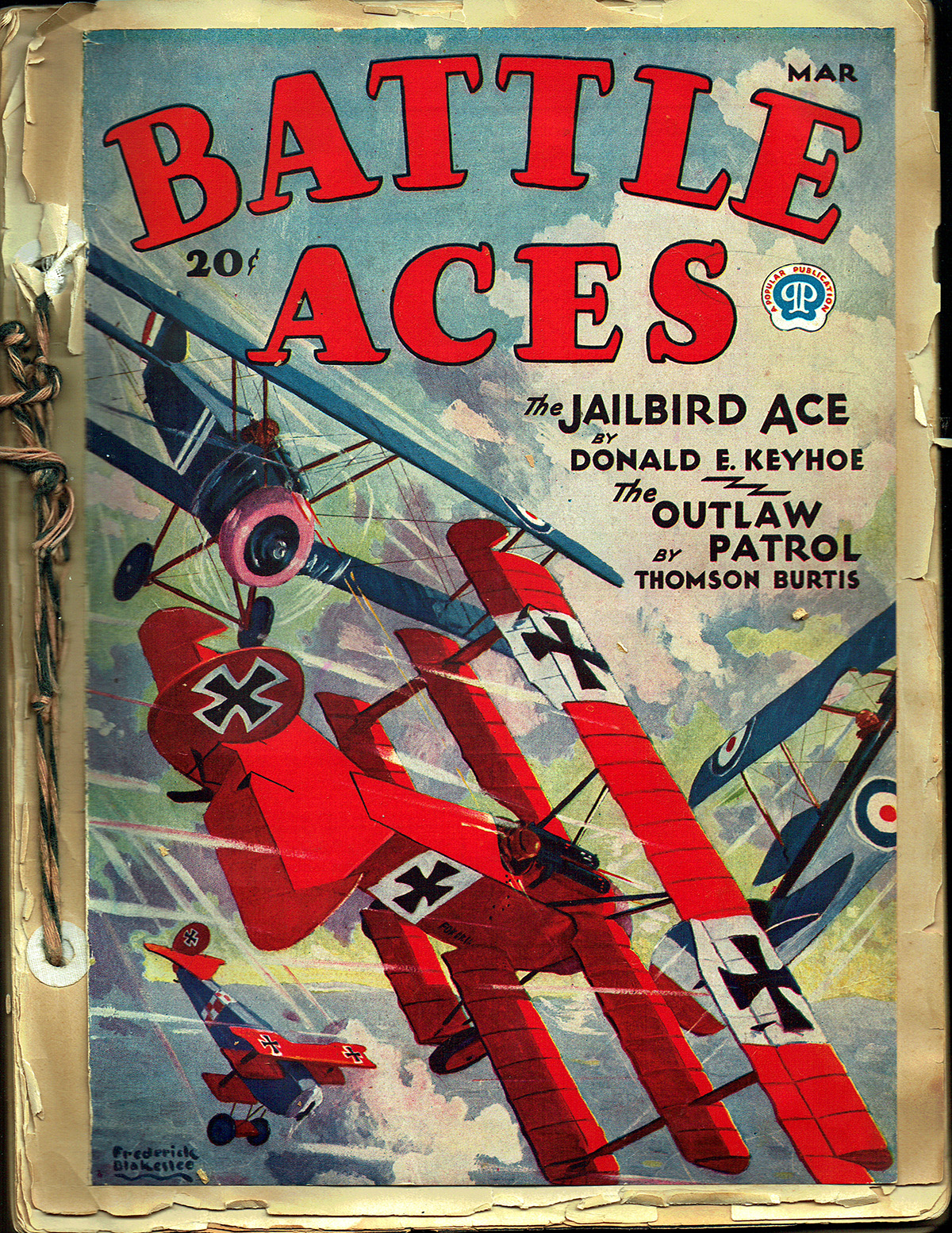 Like many in the late 20’s and early 30’s, Robert O’Neil was fascinated with aviation and as such, a large part of both volumes of his scrapbooks is taken up with a cataloging of the many different types of planes. But amongst all the planes and air race flyers and info on Aces are some surprising items.
Like many in the late 20’s and early 30’s, Robert O’Neil was fascinated with aviation and as such, a large part of both volumes of his scrapbooks is taken up with a cataloging of the many different types of planes. But amongst all the planes and air race flyers and info on Aces are some surprising items.

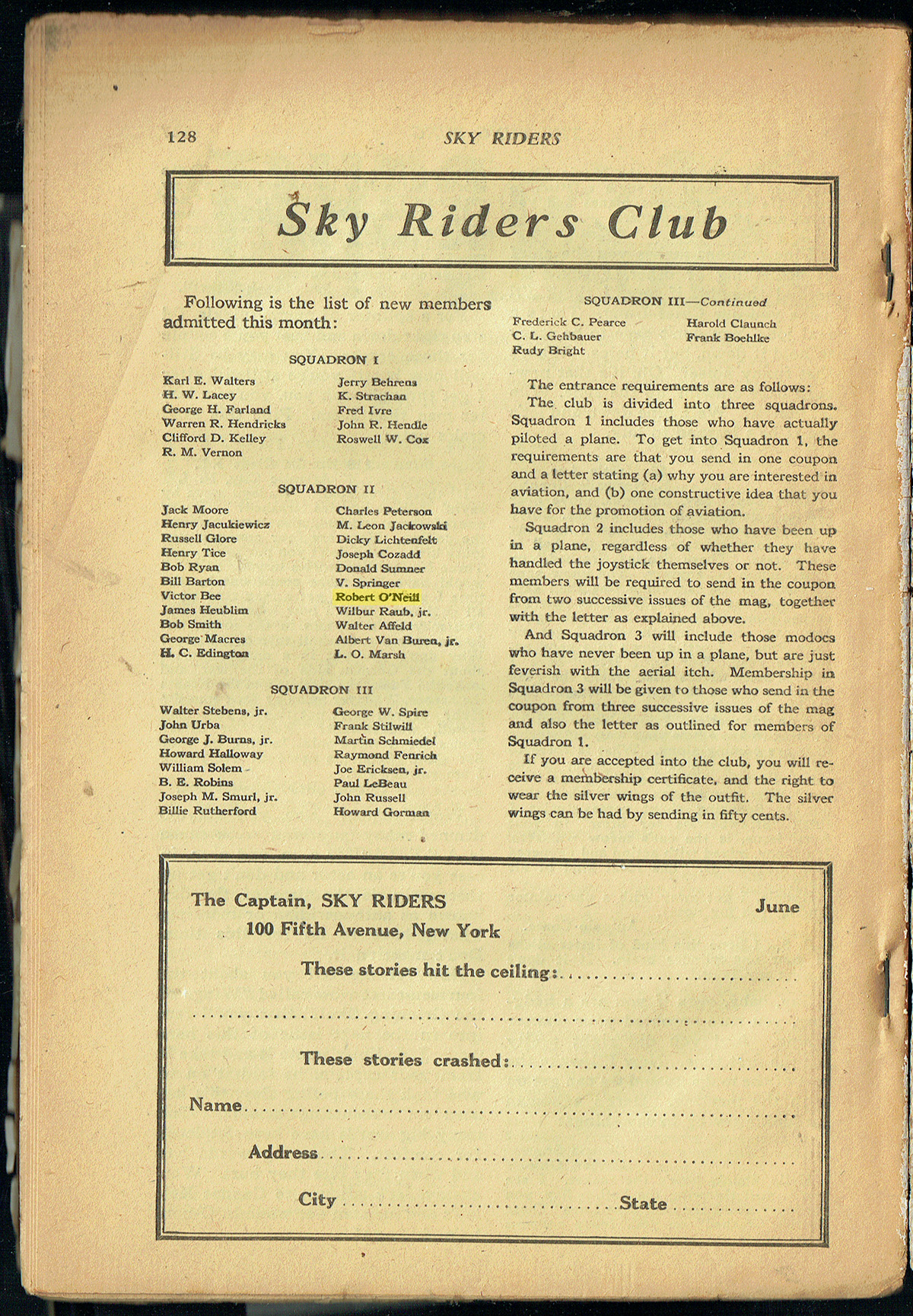
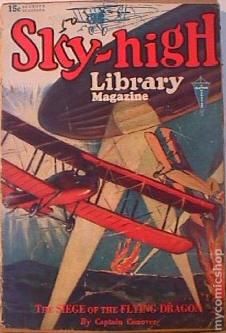 The Sky Riders Club had been combined with those members of the short lived Flying Corp Cadets which had been formed by readers of the first and sadly only issue of Clayton Magazine’s Sky High Library published in February 1930. The increase in new memberships allowed them to drop the price of the silver wings pin from 50¢ to 25¢ (September, 1930)
The Sky Riders Club had been combined with those members of the short lived Flying Corp Cadets which had been formed by readers of the first and sadly only issue of Clayton Magazine’s Sky High Library published in February 1930. The increase in new memberships allowed them to drop the price of the silver wings pin from 50¢ to 25¢ (September, 1930)

 a short story by renowned pulp author Frederick C. Davis. Davis is probably best remembered for his work on Operator 5 where he penned the first 20 stories, as well as the Moon Man series for Ten Detective Aces and several other continuing series for various Popular Publications. He also wrote a number of aviation stories that appeared in Aces, Wings and Air Stories.
a short story by renowned pulp author Frederick C. Davis. Davis is probably best remembered for his work on Operator 5 where he penned the first 20 stories, as well as the Moon Man series for Ten Detective Aces and several other continuing series for various Popular Publications. He also wrote a number of aviation stories that appeared in Aces, Wings and Air Stories.  a story from the pen of Donald E. Keyhoe—in fact, I believe it is his first aviation story he had in the pulps! More soap opera than dashing wartime aviation thriller, Keyhoe tells the story of Harvey Masters, Dizzy Jim Boyd, and the girl unwittingly caught between them! The strangest part is that nobody ever suspected the truth about Dizzy Jim Boyd, though there was a lot of guessing when he first showed up at Western Airways Field, until the day when Harvey Masters came through and stopped for gas. . .
a story from the pen of Donald E. Keyhoe—in fact, I believe it is his first aviation story he had in the pulps! More soap opera than dashing wartime aviation thriller, Keyhoe tells the story of Harvey Masters, Dizzy Jim Boyd, and the girl unwittingly caught between them! The strangest part is that nobody ever suspected the truth about Dizzy Jim Boyd, though there was a lot of guessing when he first showed up at Western Airways Field, until the day when Harvey Masters came through and stopped for gas. . . 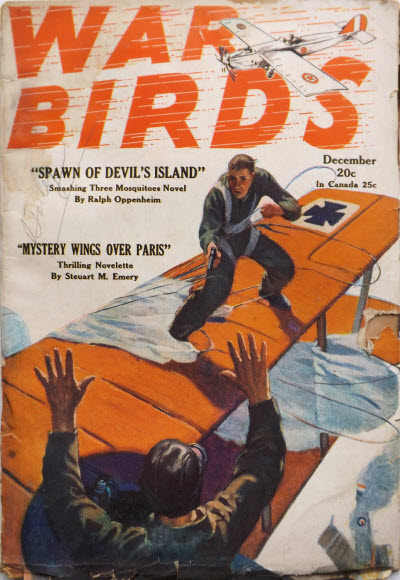 the second of three Three Mosquitoes stories we’re presenting this month. The Mosquitoes fame had spread to such an extent on the Western Front that the German high command had issued a general order to get them, alive or dead. To cool things down, our impetuous trio has been temporarily reassigned to the British East African front. While on patrol the trio is hit by a violent tropical storm and separated. Kirby finds himself swept out over the Indian Ocean. After a confrontation with a Zeppelin he tried to take with him, Kirby is forced to land on a scraggy rock in the middle of the ocean. Marooned. His only company the skeletons of the island’s previous visitors, until—it turns out he did bring down the zeppelin, unfortunately the german crew of said zeppelin find themselves marooned on the same rock! From the December 1st, 1929 number of War Birds, it’s The Three Mosquitoes vs the “Spawn of Devil’s Island!”
the second of three Three Mosquitoes stories we’re presenting this month. The Mosquitoes fame had spread to such an extent on the Western Front that the German high command had issued a general order to get them, alive or dead. To cool things down, our impetuous trio has been temporarily reassigned to the British East African front. While on patrol the trio is hit by a violent tropical storm and separated. Kirby finds himself swept out over the Indian Ocean. After a confrontation with a Zeppelin he tried to take with him, Kirby is forced to land on a scraggy rock in the middle of the ocean. Marooned. His only company the skeletons of the island’s previous visitors, until—it turns out he did bring down the zeppelin, unfortunately the german crew of said zeppelin find themselves marooned on the same rock! From the December 1st, 1929 number of War Birds, it’s The Three Mosquitoes vs the “Spawn of Devil’s Island!”